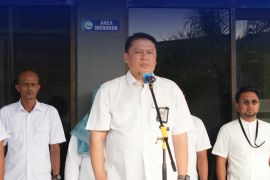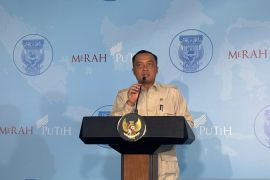"At first we had difficulties with technology. However, thank God, now empty palm fruit bunch pellets can be produced and used for co-firing," coordinator of investment and bioenergy cooperation at the ministry, Trois Dilisusendi, said, according to a statement released in Jakarta on Tuesday.
The use of empty oil palm fruit bunch pellets is novel and a sign that there are more sources of processed waste that can be used as raw materials for co-firing biomass, he observed.
That is because it is not an easy matter to process empty oil palm fruit bunch waste into biomass raw material, he added.
Dilisusendi expressed the hope that the innovation would be applied in coal-fired steam power plants (PLTU) belonging to PLN, which have been asked to use alternative or co-firing fuels.
President director of PLN Energi Primer Indonesia (PLN EPI), Iwan Agung Firstantara, said that his party is fully committed to supporting the government's plan to achieve the co-firing utilization target of 10.2 million tons by 2025. According to him, the substitution of coal fuel with biomass is a strategic project.
"Aside from being able to reduce dependence on coal, which is fossil energy, this step is one way to reduce carbon emissions to reach NZE 2060. By co-firing biomass, PLN can get clean energy at minimal cost," Firstantara added.
Some time ago, PLN also signed an MoU with PT Elektrika Construction Nusantara (EKN) to utilize empty palm oil bunch waste to co-fire biomass at the Bengkayang PLTU in West Kalimantan. Both parties agreed to directly involve the Sambas community of West Kalimantan in the biomass production process.
Firstantara informed that 40 local workers from Sambas have been absorbed in the biomass processing activity. He said he is optimistic that another type of co-firing program that has been initiated will be able to absorb local workers on a massive scale and solve the waste problem, which is frequently seen in many regions.
"There are 40 people involved in the production of empty oil palm fruit bunch pellets. Likewise with other types of biomass. Hopefully, this will be a good start because all this time empty bunches have probably been piling up in the garden and now they can be used," he added.
Concurring with him, chair of the West Kalimantan Electricity Society (MKI), M. Ariyanto, said that empty oil palm fruit bunches are quite abundant, especially in the West Kalimantan region. According to him, so far, empty palm oil bunches have been considered waste.
However, he said he believes that empty bunches have economic value. Ariyanto informed that he was encouraged to conduct research to prove the benefits of oil palm fruit bunches by collaborating with Tanjungpura University.
The research has been running for four years and now, he said he has proven that empty oil palm fruit bunches can be used as raw materials for biomass co-firing.
"Thank God, after four years, we were finally able to produce pellets from empty palm oil bunches," Ariyanto explained.
He revealed that the large number of sources of empty fruit bunches in West Kalimantan is supported by the existence of palm oil mills (PKS) with the potential of producing 170 empty bunches per day.
Related news: Indonesia boosts decarbonization to realize NZE 2060 target
Related news: PLTU Jawa 9&10, PLNE joint study to reduce emissions
Related news: Realizing efforts to achieve NZE with energy transition
Translator: Faisal Yunianto, Cindy Frishanti Octavia
Editor: Azis Kurmala
Copyright © ANTARA 2023












